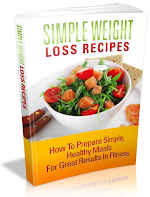A Beginner’s Guide to Ketogenic Diet
Keto diet A Detailed Beginner’s Guide to Ketogenic Diet (also known as the keto diet) is a low-carb, high-fat diet with numerous health benefits.
Many studies have shown that eating this way can help you lose weight and improve your health. Diabetes, cancer, epilepsy, and Alzheimer's disease may all benefit from a ketogenic diet. Here's a step-by-step guide to the keto diet for beginners.
 |
Keto diet A Detailed Beginner’s Guide to Ketogenic Diet |
What is a keto diet?
The fundamentals of the keto diet is a low-carb, high-fat diet that resembles the Atkins and low-carb diets in many ways. It entails drastically lowering carbohydrate intake and substituting fat. This decrease in carbs causes your body to enter a metabolic state known as ketosis.
Your body becomes incredibly efficient at burning fat for energy when this happens. no fat burning causes fat to be converted to ketones in the liver, which can be used to provide energy to the brain. Keto diet.
Ketogenic diets can lower blood sugar and insulin levels significantly. This, in addition to the increased ketones, has some health advantages. Keto diet.
Different types of keto diet.
The ketogenic diet comes in a variety of forms, including:
- Standard ketogenic diet (SKD): This is a high-fat, low-carb, moderate-protein diet. It usually has 70 percent fat, 20 percent protein, and only 10% carbohydrates.
- Cyclical ketogenic diet (CKD): Periods of higher-carb refeeding are included in this diet, such as 5 ketogenic days followed by 2 high-carb days.
- Targeted ketogenic diet (TKD): You can eat carbs around workouts on this diet.This ketogenic diet is similar to a standard ketogenic diet, but it contains more protein. Typically, the fat-to-protein-to-carbohydrate ratio is 60% fat, 35% protein, and 5% carbs.Only the standard and high-protein ketogenic diets have been thoroughly researched. Advanced ketogenic diets, such as cyclical or targeted ketogenic diets, are primarily used by bodybuilders and athletes.Although many of the same principles apply to all versions of the ketogenic diet, the information in this article mostly applies to the standard ketogenic diet (SKD).
What is ketosis?
Ketosis is a metabolic state in which your body burns fat instead of carbohydrates for energy.
It occurs when you drastically reduce your carbohydrate intake, limiting your body's supply of glucose (sugar), which is the cells' primary source of energy.
The most effective way to enter ketosis is to eat a ketogenic diet. This usually entails limiting carb intake to 20 to 50 grams per day and focusing on fats like meat, fish, eggs, nuts, and healthy oils.
It's also crucial to keep your protein intake in check. This is because if you eat too much protein, it will be converted to glucose, which will slow down your ketosis.
Intermittent fasting may also help you enter ketosis more quickly. Intermittent fasting can take many forms, but the most common involves restricting food intake to around 8 hours per day and fasting for the remaining 16 hours.
There are blood, urine, and breath tests that can be used to see if you've entered ketosis by counting how many ketones your body produces.
Increased thirst, dry mouth, frequent urination, and decreased hunger or appetite are all signs that you've entered ketosis.
Keto diet can help you lose weight.
A ketogenic diet can help you lose weight and reduce your risk of disease. Keto diet.
In fact, research suggests that the ketogenic diet may be just as effective as a low-fat diet for weight loss.
Furthermore, because the diet is so filling, you can lose weight without counting calories or keeping track of what you eat.
Following a very low carb, a ketogenic diet was slightly more effective for long-term weight loss than following a low-fat diet, according to a review of 13 studies. The keto diet resulted in an average weight loss of 2 pounds (0.9 kg) more than the low-fat diet group. Keto diet
Additionally, it resulted in lower diastolic blood pressure and triglyceride levels.
Another study of 34 older adults found that those on a ketogenic diet for eight weeks lost nearly five times as much total body fat as those on a low-fat diet. Keto diet
Increased ketones, lower blood sugar levels, and improved insulin sensitivity could all be contributing factors.
Keto diet for diabetes and prediabetes.
Changes in metabolism, high blood sugar, and impaired insulin function are all symptoms of diabetes.
Excess fat is linked to type 2 diabetes, prediabetes, and metabolic syndrome, and the ketogenic diet can help you lose it.
According to one older study, the Keto diet increased insulin sensitivity by 75%.
In a small study of women with type 2 diabetes, following a Keto diet for 90 days reduced hemoglobin A1C levels, which is a measure of long-term blood sugar management.
Another study found that over the course of two years, 349 people with type 2 diabetes who followed a Keto diet lost an average of 26.2 pounds (11.9 kg). When it comes to the link between obesity and type 2 diabetes, this is a significant benefit.
Furthermore, they had better blood sugar control, and the use of certain blood sugar medications was reduced among the participants over the course of the study.
Other health benefits of keto.
- Heart disease. Body fat, HDL (good) cholesterol levels, blood pressure, and blood sugar levels can all benefit from a ketogenic diet.
- Cancer. Because it may help slow tumor growth, the diet is currently being researched as an additional cancer treatment.
- Alzheimer’s disease. The keto diet may help to alleviate Alzheimer's symptoms and slow the disease's progression.
- Epilepsy. The ketogenic diet has been shown in studies to help children with epilepsy have fewer seizures.
- Parkinson’s disease. Although more research is needed, one study found that the diet can help with Parkinson's disease symptoms.
- Polycystic ovary syndrome. The ketogenic diet can aid in the reduction of insulin levels, which may be important in polycystic ovary syndrome.
- Brain injuries. According to some studies, eating a healthy diet can help people recover from traumatic brain injuries.
Keep in mind, however, that much of this research is still inconclusive.
Foods to avoid.
Carbohydrate-rich foods should be avoided.
On a ketogenic diet, the following foods must be reduced or eliminated:
- sugary foods: Soda, fruit juice, smoothies, cake, ice cream, and candy are just a few examples.
- grains or starches: Wheat-based products, rice, pasta, cereal, and other similar foods.
- fruit: all fruit, with the exception of small amounts of berries such as strawberries.
- beans or legumes: legumes such as peas, kidney beans, lentils, chickpeas, and others.
- root vegetables and tubers: potatoes, sweet potatoes, carrots, parsnips, and other root vegetables.
- low fat or diet products: condiments, salad dressings, and low-fat mayonnaise.
- some condiments or sauces: BBQ sauce, honey mustard, teriyaki sauce, ketchup, and other condiments.
- unhealthy fats: mayonnaise, processed vegetable oils, and so on.
- alcohol: mixed drinks, beer, wine, and liquor.
- sugar-free diet foods: Candies, syrups, puddings, sweeteners, desserts, and other sugar-free products.
Foods to eat.
The following foods should make up the majority of your meals:
- meat: Steak, ham, sausage, bacon, chicken, and turkey are all examples of red meat.
- fatty fish: Salmon, trout, tuna, and mackerel are some of the most popular fish.
- eggs: whole eggs (pastured or omega-3).
- butter and cream: heavy cream and grass-fed butter.
- cheese: Cheddar, goat, cream, blue, and mozzarella cheeses are examples of unprocessed cheeses.
- nuts and seeds: Almonds, walnuts, flaxseeds, pumpkin seeds, chia seeds, and other similar nuts and seeds.
- healthy oils: avocado oil, extra virgin olive oil, and coconut oil.
- avocados: whole avocados or guacamole made from scratch.
- low carb veggies: green vegetables, tomatoes, onions, peppers, and other vegetables.
- condiments: seasonings such as salt, pepper, herbs, and spices.
It's best to eat mostly whole, single-ingredient foods in your diet. Here's a list of 44 low-carb foods that are both healthy and delicious.
A week's worth of keto meal ideas.
Here's a sample ketogenic diet meal plan for a week to get you started:
Monday.
- breakfast: muffins with vegetables and eggs and tomatoes.
- lunch: Salad of chicken with olive oil, feta cheese, and olives, as well as a side salad.
- dinner: Asparagus cooked in butter with salmon.
Tuesday.
- breakfast: omelet with egg, tomato, basil, and spinach.
- lunch: Milkshake made with almond milk, peanut butter, spinach, cocoa powder, and stevia, served with sliced strawberries on the side.
- dinner: tacos in a cheese shell with salsa.
Wednesday.
- breakfast: nut milk chia pudding with blackberries and coconut.
- lunch: salad with avocado and shrimp.
- dinner: Pork chops, broccoli, and salad with Parmesan cheese.
Thursday.
- breakfast: Avocado, salsa, peppers, onion, and spices in an omelet.
- lunch: guacamole and salsa with a handful of nuts and celery sticks.
- dinner: stuffed chicken with pesto and cream cheese, with grilled zucchini on the side.
Friday.
- breakfast: peanut butter, cocoa powder, and berries in a sugar-free Greek whole milk yogurt.
- lunch: tacos with ground beef lettuce wraps and sliced bell peppers.
- dinner: cauliflower with a ton of veggies.
Saturday.
- breakfast: Cream cheese pancakes with blueberries and grilled mushrooms on the side.
- lunch: Salad with zucchini and beet “noodles”.
- dinner: kale and toasted pine nuts with white fish cooked in coconut oil.
Sunday.
- breakfast: with mushrooms and fried eggs.
- lunch: broccoli and low-carb sesame chicken.
- dinner: Bolognese spaghetti squash.
Over time, try to rotate your vegetables and meat, as each type provides different nutrients and health benefits.
Healthy keto snacks.
Here are some healthy, keto-approved snacks to keep you going between meals:
- fatty meat or fish.
- cheese.
- a handful of nuts or seeds.
- keto sushi bites.
- olives.
- one or two hard-boiled or deviled eggs.
- keto-friendly snack bars.
- 90% dark chocolate.
- full-fat Greek yogurt mixed with nut butter and cocoa powder.
- bell peppers and guacamole.
- strawberries and plain cottage cheese.
- celery with salsa and guacamole.
- beef jerky.
- smaller portions of leftover meals.
- fat bombs.
Keto tips and tricks.
Although getting started on the ketogenic diet can be difficult, there are a few tricks you can use to make it go more smoothly.
- To figure out how your favorite foods can fit into your diet, familiarize yourself with food labels and check the grams of fat, carbs, and fiber.
- It's also a good idea to plan your meals ahead of time so you can save time throughout the week.
- Keto-friendly recipes and meal ideas can be found on a variety of websites, food blogs, apps, and cookbooks.
- Alternatively, for a quick and convenient way to enjoy keto meals at home, some meal delivery services offer keto-friendly options.
- When you're short on time, consider healthy frozen keto meals.
- When attending social gatherings or visiting family and friends, bringing your own food can help you curb cravings and stick to your meal plan.
On a ketogenic diet, there are a few things to keep in mind when dining out.
Keto-friendly versions of many restaurant dishes are available.
Almost every restaurant serves meat or fish-based dish. Order this and add extra vegetables to any high-carb meal.
Egg-based meals, such as an omelet or eggs and bacon, are also excellent choices.
Burgers without buns are another popular option. You could also substitute vegetables for the fries. Extra avocado, cheese, bacon, or eggs can be added.
You can order any type of meat with extra cheese, guacamole, salsa, and sour cream at Mexican restaurants.
Request a mixed cheese board or berries with cream for dessert.
How to Reduce the Risk of Side Effects.
Although the ketogenic diet is generally safe for most healthy people, some side effects may occur as your body adjusts.
There is some anecdotal evidence of these side effects, which are known as the keto flu. According to some people on the eating plan, it usually only lasts a few days.
Diarrhea, constipation, and vomiting have all been reported as keto flu symptoms. Other symptoms that are less common include:
- poor energy and mental function.
- increased hunger.
- sleep issues.
- nausea.
- digestive discomfort.
- decreased exercise performance.
For the first few weeks, you can try a regular low-carb diet to reduce this. Before you completely eliminate carbs, this may teach your body to burn more fat.
Because a ketogenic diet can alter your body's water and mineral balance, adding extra salt to your meals or taking mineral supplements may be beneficial. Consult your doctor about your dietary requirements.
It's important to eat until you're satisfied, at least at first, and to avoid restricting calories too much.
A ketogenic diet usually results in weight loss without calorie restriction.
Risks of the keto diet.
Staying on the keto diet for an extended period of time may have some negative consequences. which includes the following risks:
- low protein in the blood.
- extra fat in the liver.
- kidney stones.
- micronutrient deficiencies.
Sodium-glucose cotransporter 2 (SGLT2) inhibitors, a type of diabetes medication, can raise the risk of diabetic ketoacidosis, a dangerous condition that causes blood acidity to rise. The keto diet should be avoided by anyone taking this medication.
More research is being conducted to determine the keto diet's long-term safety. Keep your doctor informed about your eating plan so that he or she can help you make the best decisions.
Supplements for a ketogenic diet.
- MCT oil. MCT oil, which can be added to drinks or yogurt, provides energy and aids in ketone production. it can be purchased online.
- Minerals. Due to changes in water and mineral balance, adding salt and other minerals can be beneficial when first starting out.
- Caffeine. Caffeine has been shown to help with energy, fat loss, and performance.
- Exogenous ketones. This supplement may aid in increasing ketone levels in the body.
- Creatine. Creatine has numerous health and performance benefits. If you're combining a ketogenic diet with exercise, this can help.
- Whey. To increase your daily protein intake, add half a scoop of whey protein to shakes or yogurt.
Frequently asked questions.
Here are some of the most frequently asked questions about the ketogenic diet:
1. Can I ever eat carbs again?
Yes. However, it's critical to start by drastically reducing your carb intake. You can eat carbs on special occasions after the first 2 to 3 months, but you must immediately return to the diet.
2. Will I lose muscle?
Any diet has the potential to cause muscle loss. Protein intake and high ketone levels, on the other hand, may help to prevent muscle loss, especially if you lift weights.
3. Can I build muscle on a ketogenic diet?
Yes, but it may not be as effective as a low-carbohydrate diet.
4. How much protein can I eat?
Protein should be consumed in moderation, as a high intake can spike insulin levels and cause ketones to be depleted. The upper limit is probably around 35% of total calorie intake.
5. What if I am constantly tired, weak, or fatigued?
It's possible that you're not in full ketosis or that you're not utilizing fats and ketones effectively. Reduce your carb intake and go over the points above again to counteract this. A supplement such as MCT oil or ketones may also be beneficial.
6. My urine smells fruity. Why is this?
Please don't be alarmed. This is simply due to the excretion of ketosis-related by-products.
7. My breath smells. What can I do?
This is a common complication. Drinking naturally flavored water or chewing sugar-free gum are both good options.
8. I heard ketosis was extremely dangerous. Is this true?
Ketosis is frequently confused with ketoacidosis. Ketoacidosis is dangerous, but for healthy people, ketosis on a ketogenic diet is usually fine. Before beginning any new diet, consult your doctor.
9. I have digestion issues and diarrhea. What can I do?
This is a common side effect that lasts 3 to 4 weeks. If the problem persists, increase your intake of high-fiber vegetables.
Last but not least.
A ketogenic diet may be beneficial to those who:
- are overweight.
- have diabetes.
- are looking to improve their metabolic health.
Elite athletes and those looking to gain a lot of muscle or weight may find it less suitable.
It might not be a viable option for some people's lifestyles or preferences. Consult your doctor about your diet and goals to see if a ketogenic diet is right for you.
You may also like:
Paleo diet.
weight loss.
Weight Loss Plan.
________________________________________________
Ancient Japanese Discovery Melts 54 LBS Of Fat
The Custom Keto Diet | Your Personal Keto Custom Plan
Nature's Secret for Healthy Blood Sugar. Weight Loss
The Delicious Smoothie Diet: 21 Day Rapid Weight Loss Program
Powerful New Formula To Support Healthy Weight Loss
The Secret For Healthy Weight Loss


















0 Comments